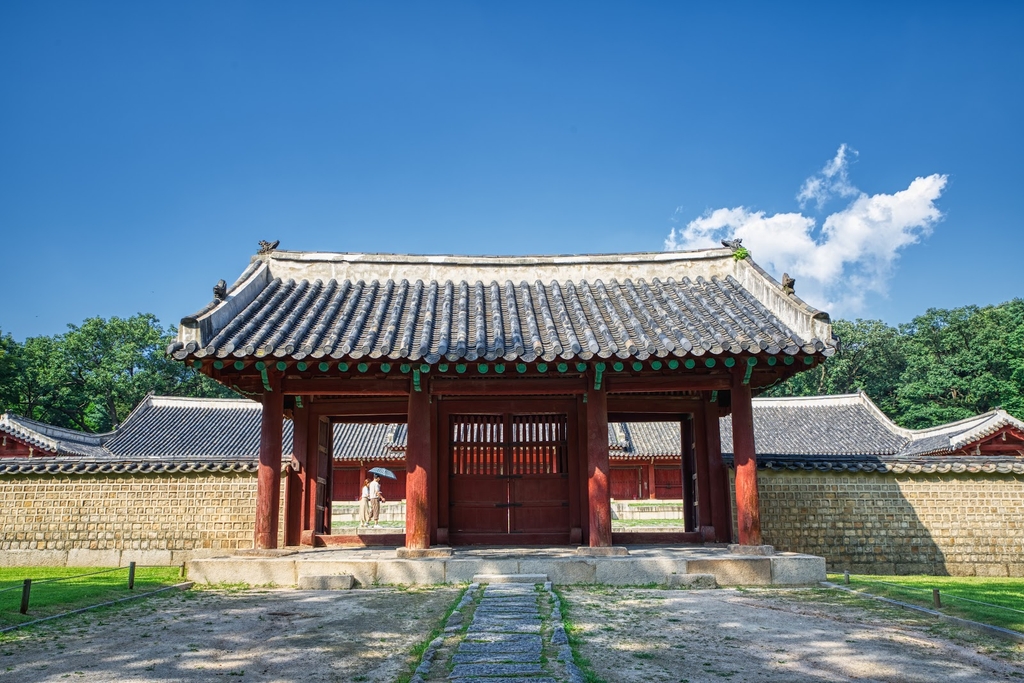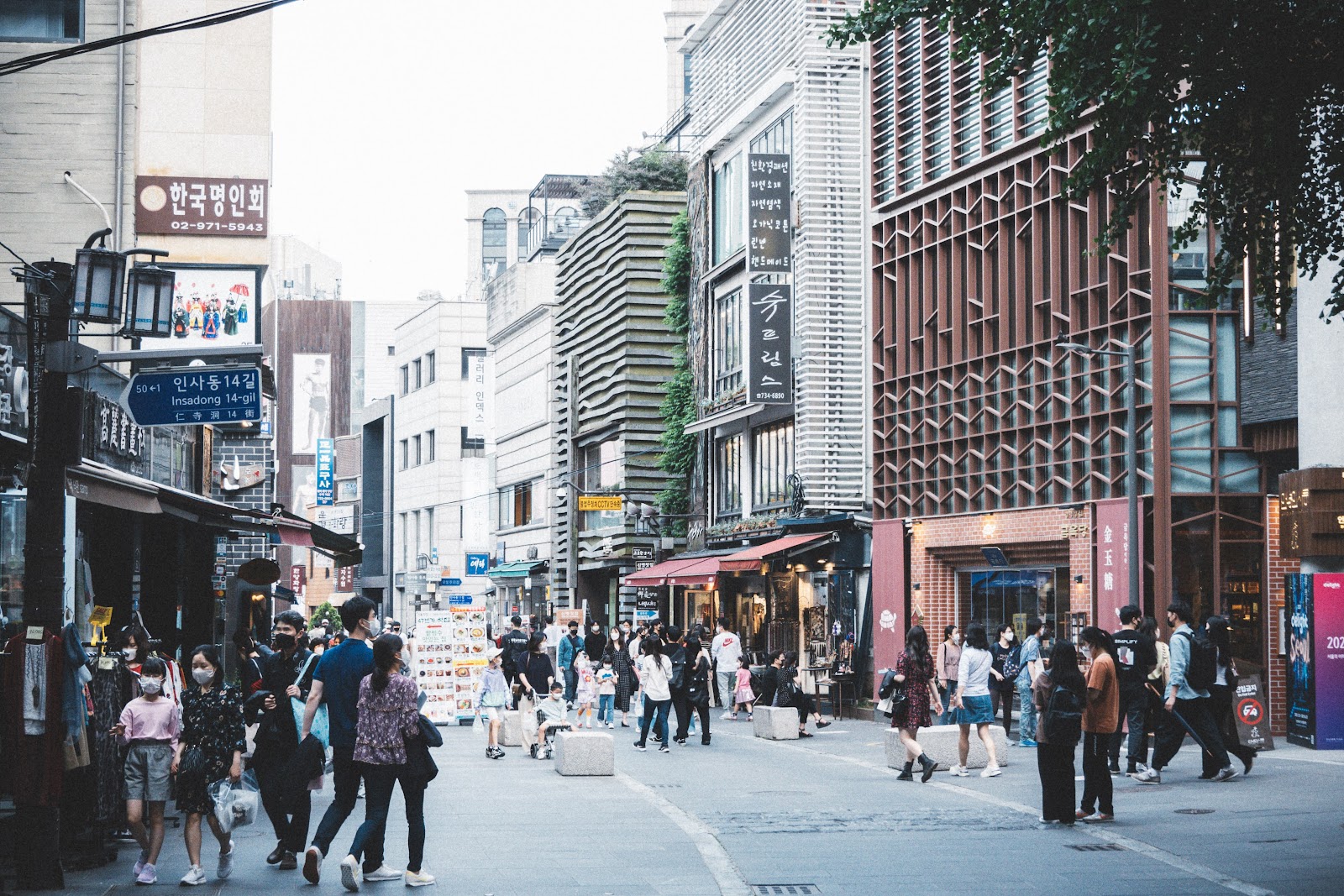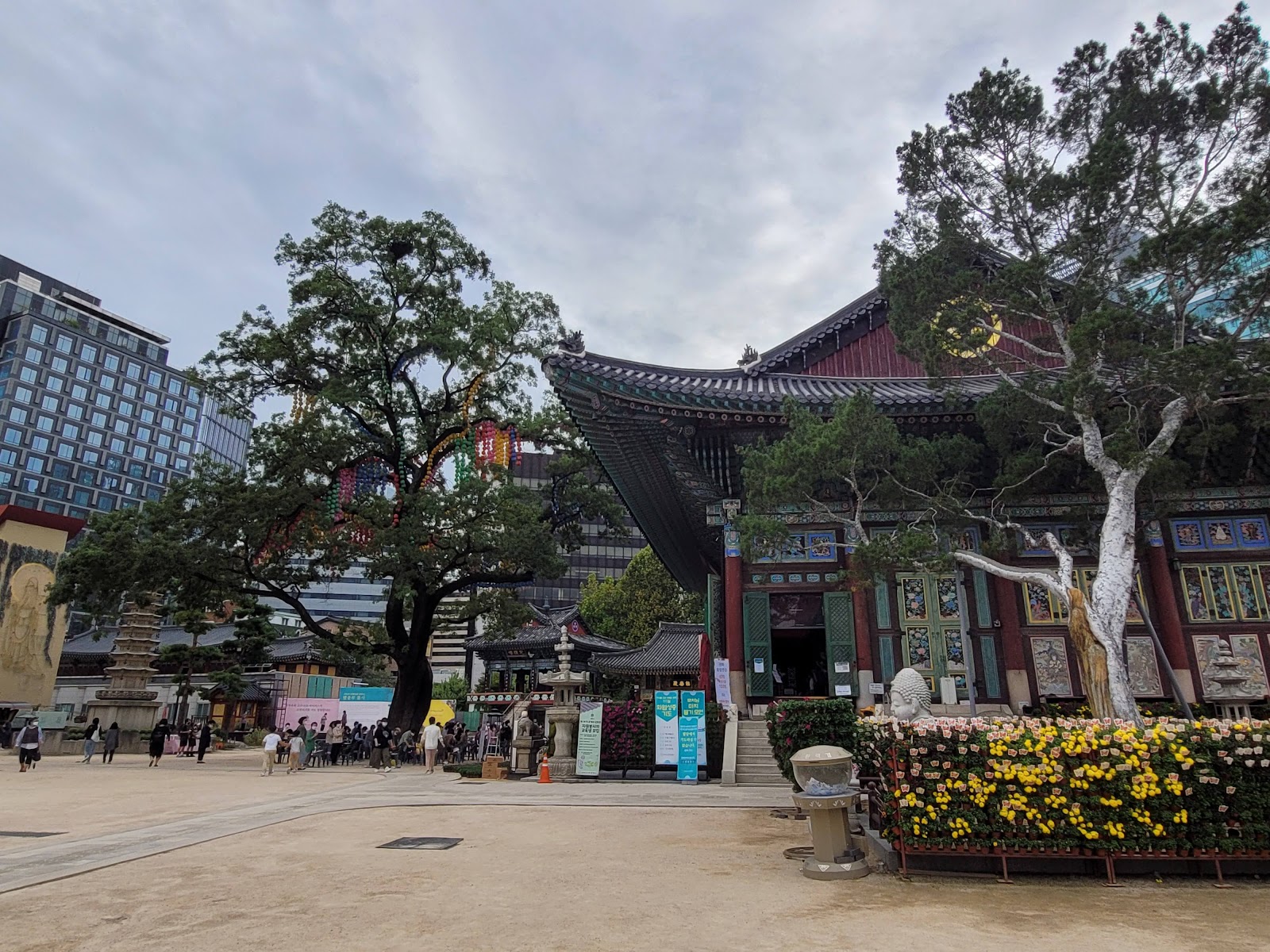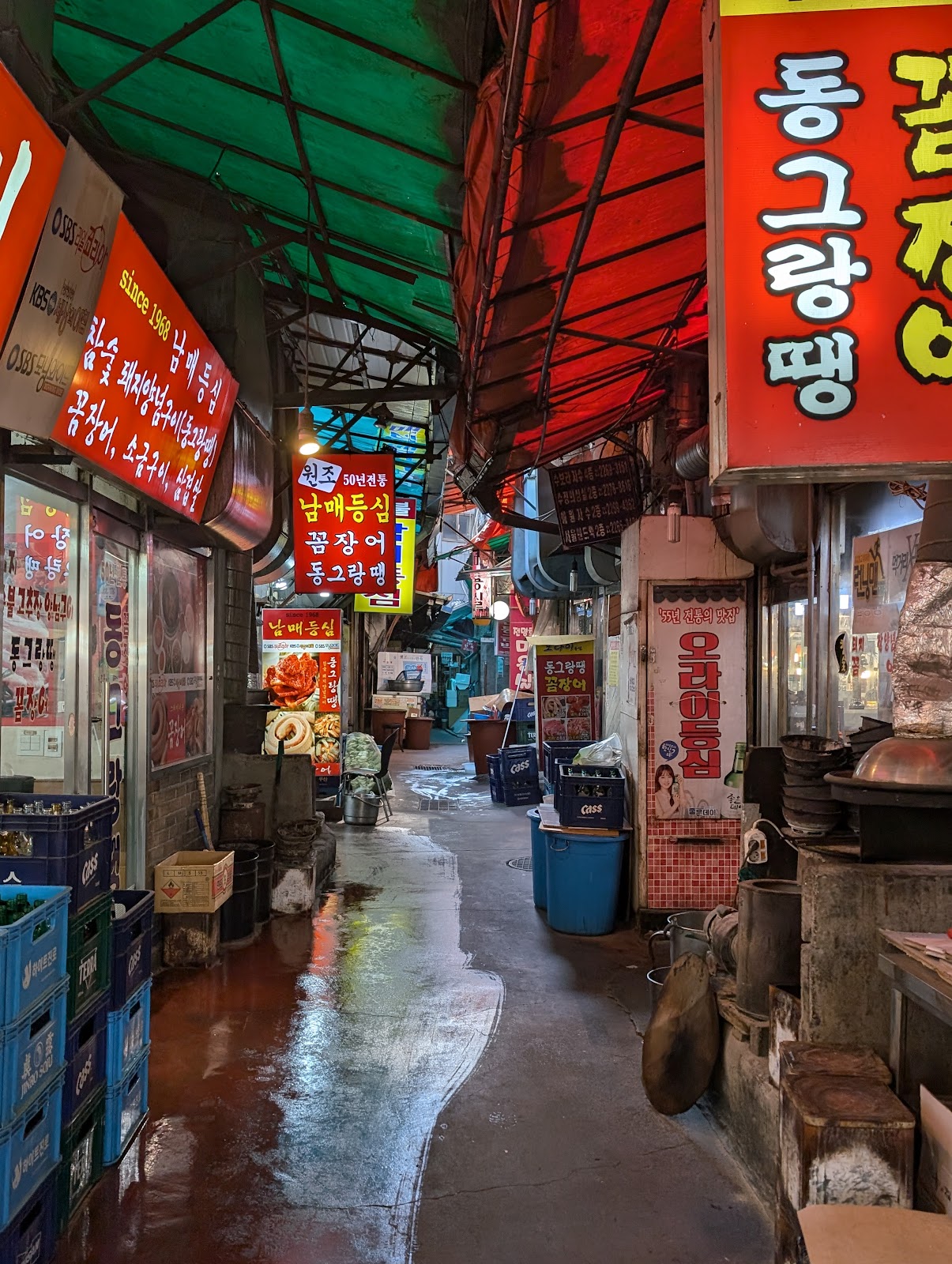Seoul's Royal and Cultural Journey
Discover Seoul's rich heritage and vibrant culture on this immersive free walking tour, exploring palaces, temples, and bustling markets.
Time
3 Hours
Stops
9 Places
Distance
?
Gyeongbokgung Palace
As the largest of the Five Grand Palaces built during the Joseon Dynasty, Gyeongbokgung Palace is a majestic introduction to Seoul's royal history.

Gyeongbokgung Palace (Source: Google Maps)
Gyeongbokgung Palace, built in 1395, is the largest of the Five Grand Palaces of the Joseon Dynasty. It served as the main royal palace for centuries, showcasing stunning traditional Korean architecture. The palace grounds feature beautiful gardens and the National Folk Museum of Korea, which provides insight into Korean history and culture. The iconic Gwanghwamun Gate, with its impressive stone and wooden structure, is a symbol of Seoul and a must-see for visitors. The palace's historical significance is highlighted during the Changing of the Guard ceremony, a vibrant display of tradition and culture. Gyeongbokgung is not only a tourist attraction but also a testament to Korea's rich royal heritage.
National Folk Museum of Korea
Located within the grounds of Gyeongbokgung Palace, this museum offers insights into the daily lives and cultural practices of Korean people throughout history.

National Folk Museum of Korea (Source: Google Maps)
The National Folk Museum of Korea, located within the grounds of Gyeongbokgung Palace, offers a comprehensive look into the everyday lives of Koreans throughout history. Established in 1945, the museum features various exhibits that showcase traditional Korean culture, including clothing, tools, and household items. The museum's layout is designed to reflect the lifestyles and customs of different historical periods, making it an engaging educational experience. Visitors can explore the outdoor exhibition area, which includes replicas of traditional houses and farming practices. The museum plays a vital role in preserving and promoting Korean cultural heritage, making it an essential stop for anyone interested in understanding Korea's past.
Bukchon Hanok Village
A short walk from the museum, Bukchon Hanok Village is a picturesque area showcasing traditional Korean houses (hanoks) and offers a glimpse into the past in the heart of the city.

Bukchon Hanok Village (Source: Google Maps)
Bukchon Hanok Village is a historic area in Seoul that features hundreds of traditional Korean houses, known as hanoks. These structures date back to the Joseon Dynasty and are characterized by their unique architectural style, which harmonizes with the surrounding nature. The village serves as a living museum, offering visitors a glimpse into traditional Korean life. Many hanoks are still inhabited, providing an authentic experience of Korean culture. The narrow alleyways are lined with art galleries, craft shops, and tea houses, making it a vibrant and picturesque destination. Bukchon Hanok Village is not only a cultural treasure but also an important site for preserving Korea's architectural heritage.
Changdeokgung Palace
Renowned for its beautiful Secret Garden, Changdeokgung Palace is a UNESCO World Heritage site and a prime example of Korean palace architecture.

Changdeokgung Palace (Source: Google Maps)
Changdeokgung Palace, a UNESCO World Heritage site, is renowned for its beautiful Secret Garden and harmonious architecture that blends with the surrounding landscape. Built in 1405, it served as a secondary royal palace for the Joseon Dynasty. The palace is notable for its unique layout, which follows the natural topography of the land, showcasing the principles of traditional Korean architecture. The Secret Garden, used by the royal family for leisure and contemplation, features serene ponds, pavilions, and lush greenery. Changdeokgung is celebrated for its cultural significance and is a prime example of the aesthetic ideals of the Joseon era, making it a must-visit for those interested in Korea's royal history.
Jongmyo Shrine
This Confucian shrine, dedicated to the deceased kings and queens of the Joseon Dynasty, is a serene and historically significant location.

Jongmyo Shrine (Source: Google Maps)
Jongmyo Shrine is a Confucian shrine dedicated to the deceased kings and queens of the Joseon Dynasty. Established in the 14th century, it is the oldest royal shrine in Korea and is recognized as a UNESCO World Heritage site. The shrine is notable for its simple yet elegant architecture, designed to reflect the Confucian ideals of harmony and respect for ancestors. Jongmyo hosts traditional rituals, known as Jongmyo Jerye, which have been performed for centuries to honor the spirits of the royal family. The serene atmosphere and historical significance of Jongmyo Shrine make it an essential site for understanding Korea's cultural and spiritual heritage.
Insadong Street
Known for its vibrant atmosphere, Insadong Street is the perfect place to experience traditional Korean culture through its art galleries, antique shops, and tea houses.

Insadong Street (Source: Google Maps)
Insadong Street is a vibrant cultural district in Seoul known for its rich artistic heritage and traditional Korean culture. The area is filled with art galleries, antique shops, and tea houses, making it a popular destination for both locals and tourists. Insadong is famous for its traditional crafts, including pottery, calligraphy, and hanbok (traditional clothing), providing visitors with a chance to experience Korea's artistic traditions. The street also hosts various cultural events and festivals throughout the year, celebrating Korean art and heritage. Insadong's lively atmosphere and unique offerings make it a perfect place to immerse oneself in the cultural heartbeat of Seoul.
Jogyesa Temple
As the chief temple of the Jogye Order of Korean Buddhism, Jogyesa Temple offers a peaceful retreat with its beautiful architecture and serene environment.

Jogyesa Temple (Source: Google Maps)
Jogyesa Temple is the chief temple of the Jogye Order of Korean Buddhism, representing the core of Korean Zen Buddhism. Established in 1910, the temple is known for its stunning architecture and tranquil environment. The main hall, Daeungjeon, features intricately painted ceilings and beautiful Buddha statues, attracting visitors seeking spiritual solace. The temple is surrounded by lush trees, including ancient zelkova trees that enhance its serene atmosphere. Jogyesa Temple plays a significant role in the community, hosting various cultural events, meditation sessions, and Buddhist ceremonies throughout the year. Its peaceful ambiance and cultural importance make it a must-visit site for those interested in Korean spirituality.
Cheonggyecheon Stream
This modern urban renewal project is a scenic stream that runs through downtown Seoul, providing a tranquil walking path amidst the bustling city.

Cheonggyecheon Stream (Source: Google Maps)
Cheonggyecheon Stream is a modern urban renewal project that has transformed a once-polluted waterway into a beautiful public space in downtown Seoul. Stretching over 11 kilometers, the stream features walking paths, bridges, and landscaped areas, providing a tranquil escape from the bustling city. The project, completed in 2005, aimed to restore the natural environment and improve urban livability. Cheonggyecheon is lined with art installations, fountains, and seasonal flower displays, making it a popular destination for both locals and tourists. The stream not only serves as a recreational area but also symbolizes Seoul's commitment to sustainable urban development and environmental restoration.
Gwangjang Market
Concluding the tour, Gwangjang Market is one of Korea’s oldest traditional markets, famous for its street food and vibrant atmosphere, perfect for experiencing local flavors.

Gwangjang Market (Source: Google Maps)
Gwangjang Market is one of Korea's oldest traditional markets, established in 1905. It is famous for its vibrant atmosphere and diverse array of street food offerings, including bindaetteok (mung bean pancakes), tteokbokki (spicy rice cakes), and various types of kimchi. The market features hundreds of stalls selling textiles, handicrafts, and traditional Korean goods, making it a hub for shopping and culinary experiences. Gwangjang Market is a cultural landmark that reflects the everyday life of Seoul's residents, attracting food lovers and tourists alike. The bustling environment and rich culinary heritage make it an essential stop for those wanting to experience the flavors of Korea.

Your travels, your rules.
Create your own Free Walking Tours.
Set your preferences, distances and anything you want to do or see.
Completely free, no payment required.